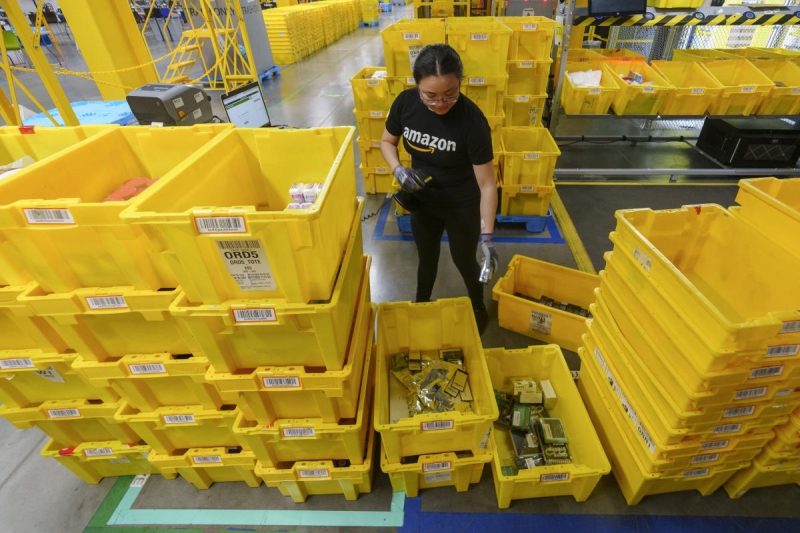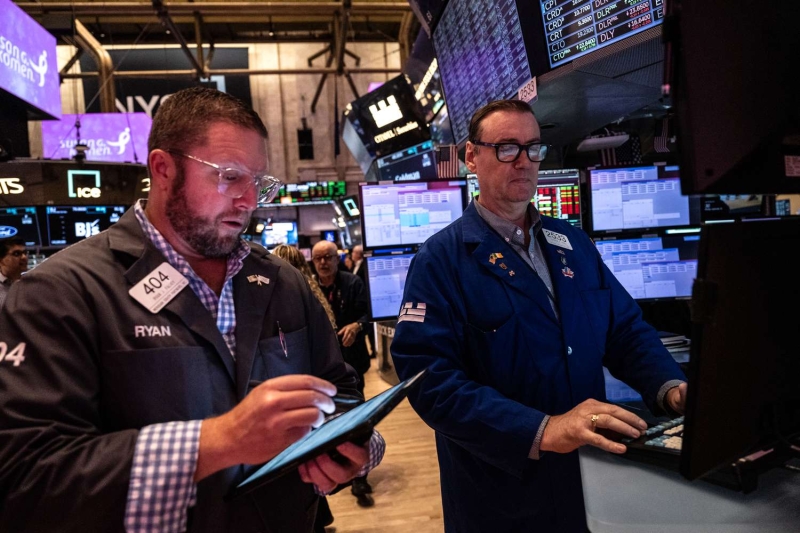
This is The Takeaway from today's Morning Brief, which you can sign up to receive in your inbox every morning along with:
-
The chart of the day
-
What we're watching
-
What we're reading
-
Economic data releases and earnings
I have never been a monthly jobs report guy.
Let me explain.
The first Friday of each month, the government releases its non-farm payrolls report — as it did this past Friday, where we saw a surprisingly strong gain of 254,000. As soon as the report hits the newswires, we (media + investors) tear apart each line to get a sense of what's happening in the economy. These days the report is really used to try and predict the direction of Fed policy.
After the initial reading frenzy, we aim to put context around it and see how it applies to the companies powering the stock market. By later in the afternoon, we shuffle along to the next market-moving story. If you are an investor, that probably means obsessing over Nvidia's (NVDA) daily price swings.
By Saturday, the jobs report is a distant memory. By Monday, it's ancient history.
The hoopla over a single data point has always seemed a bit much, especially since I've long wondered if it truly captures the real health of the economy. This thing is always revised up and down. (The prior two months were revised higher by 72,000 jobs!)
In recent years, I've rolled with the punches — reported on the numbers, asked execs about it, and tried to keep it in mind as I browse the grocery aisles.
But I still question its usefulness and accuracy, and so am forever looking for better insights into the economy.
To that end, here's the byproduct of that pursuit.
This week, I spent two days in Bentonville, Ark., meeting with the Walmart (WMT) team and walking stores. The final day concluded with an interview with its veteran CEO, Doug McMillon.
Walmart may offer the best insight into the US economy, especially as its improved assortment and online marketplace is sucking in high-income shoppers and profit. Its stock is up more than 50% this year versus rival Target's (TGT) 4.3% gain.
Here's my economic exchange with Doug:
Sozzi: How challenged is the average Walmart shopper?
McMillon: People at lower income levels are always more challenged. They have to make trade-off decisions, and that's been, I think, more acute since this inflationary cycle on the heels of the pandemic. So, a household income below $100,000 feels pressure in a way that they might not have a few years ago, and you can see that in their behavior. And we are trying to get prices down … some of the more stubborn inflation has been in the prepared foods, dry grocery type, consumable categories, like paper goods, cleaning supplies.
Sozzi: Do you see prices coming down and beginning to ease?
McMillon: The rate of inflation is less. But after a couple of years of inflation in dry grocery and consumables, they're settling out at a higher level, and we at Walmart don't want to accept that. We want to keep finding ways to be more efficient to get them back down. And we're not seeing those categories come down in the short term.
(I normally don't take pics with executives, but Doug's office is the original one used by Sam Walton, who I'm told used to keep a shotgun behind the door — he was a nature guy).
Walmart CEO Doug McMillon (right) shares his views on the retailer and economy from inside his office in Bentonville, Arkansas with Yahoo Finance executive editor Brian Sozzi (left). (Brian Sozzi)
After I got off the plane from Arkansas, I headed into the office to get ready for an Opening Bid podcast taping with my favorite chief economist Michelle Meyer from Mastercard Economics Institute (previously Bank of America). You can watch the full episode in the above video.
Michelle has access to a wealth of data on the economy and consumer, notably how people are spending on their credit and debit cards (she's forecasting a very solid holiday shopping season).
Here's an interesting economic takeaway from our chat:
Sozzi: Why is the labor market slowing?
Meyer: Think about pre-pandemic. If we got 250,000 jobs [each month], it would be like, oh my God, that's a statistical error. Like, how did the Bureau of Labor Statistics report that? Because the belief prior to the pandemic — and that's given the data we had seen in the labor market — trend job growth was probably in the order of 100,000, give or take a few in either direction.
So we in a way had this period of volatility in the labor market when we went from the extreme amount of job dislocation when the pandemic hit to this massive rehiring and reengagement in the workforce. Now we have to settle into something that should be more sustainable and probably more moderate as well.
The jobs report is probably useful, but I hope this piece is a reminder that there are more ways to get a clearer sense of the economy. Find them, and prosper.
Rewind
Last week on this digital canvas, I recommended you go out and read three books on AI to become a more informed investor (and dare I say, human being). A reader subsequently asked me to shed light on the best books related to AI.
So, I tapped my vast network of sources in the AI industry for their suggestions. The interesting thing is I was told not many great books existed yet (somewhat worrisome?) on the technology, more so online technical white papers.
Here are a few that will take you the weekend (if not longer) to get through:
Three times each week, I field insight-filled conversations with the biggest names in business and markets on Opening Bid. Find more episodes on our video hub. Watch on your preferred streaming service. Or listen and subscribe on Apple Podcasts, Spotify, or wherever you find your favorite podcasts.



